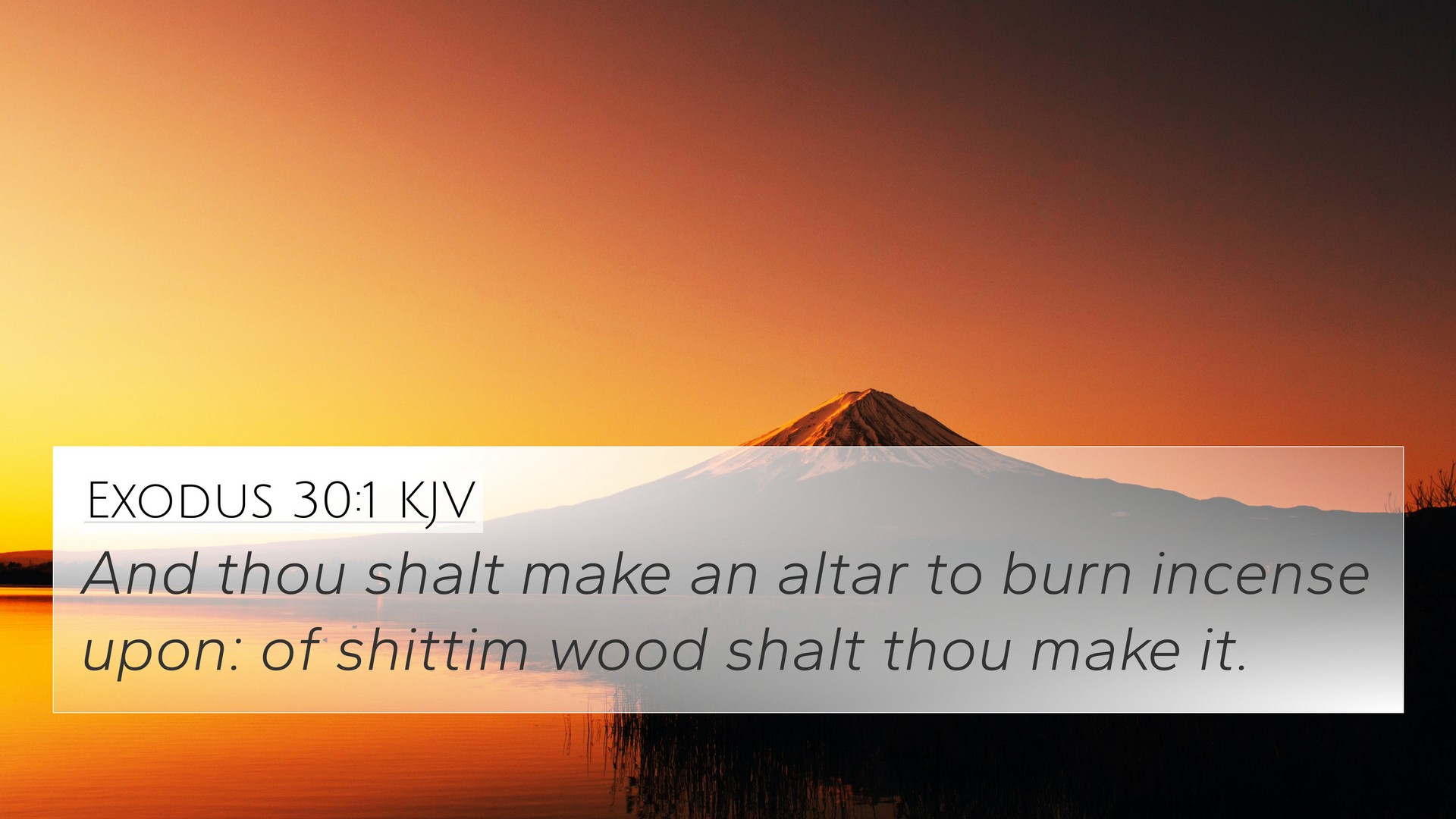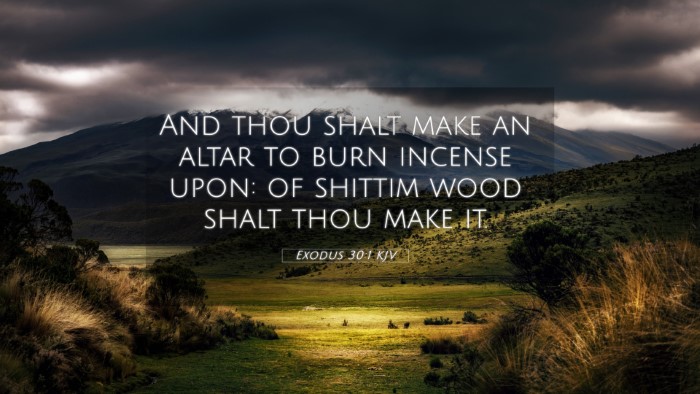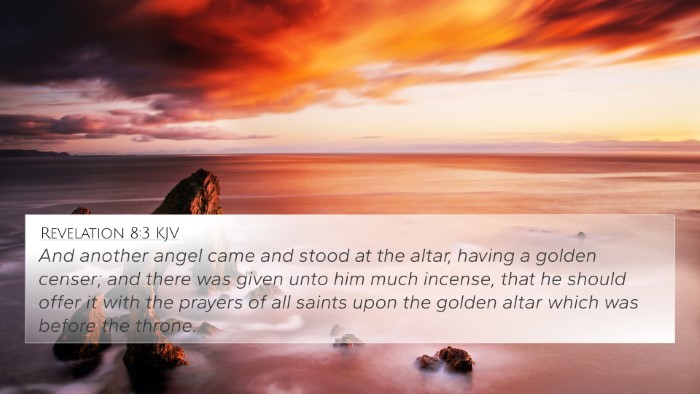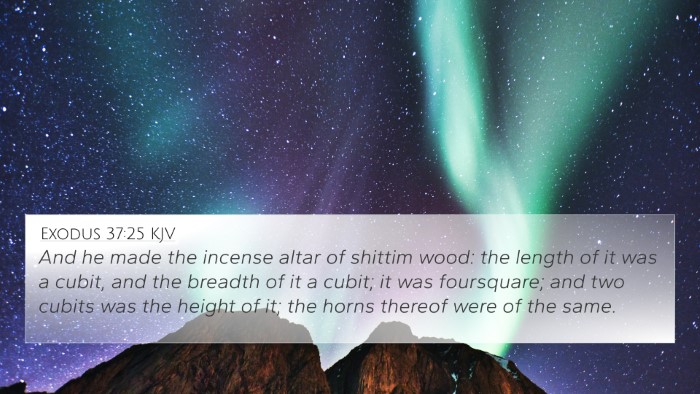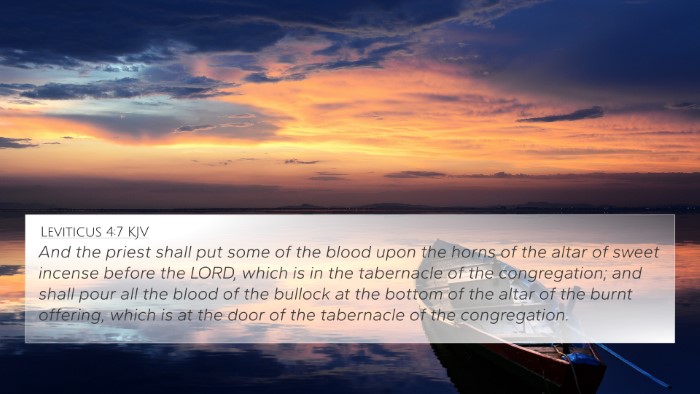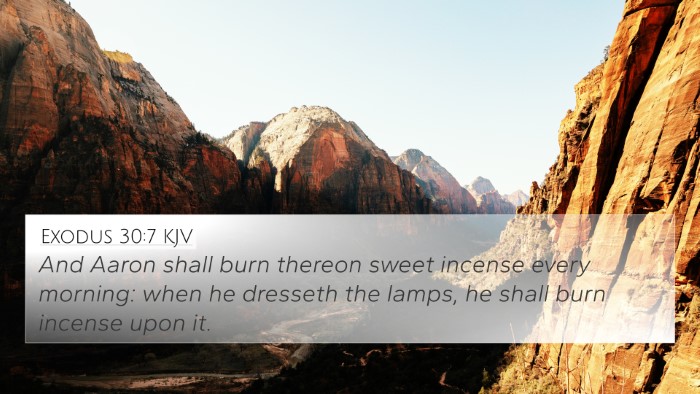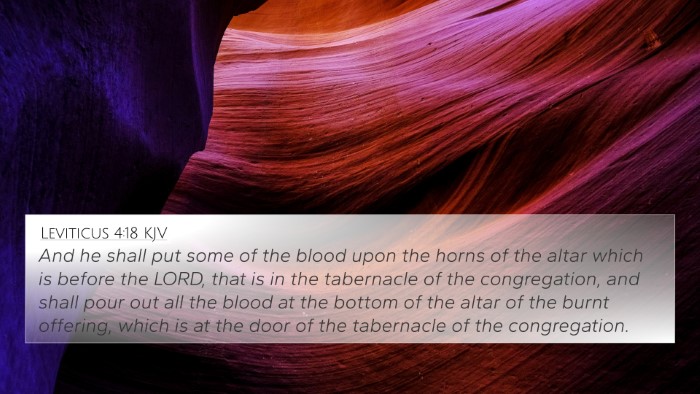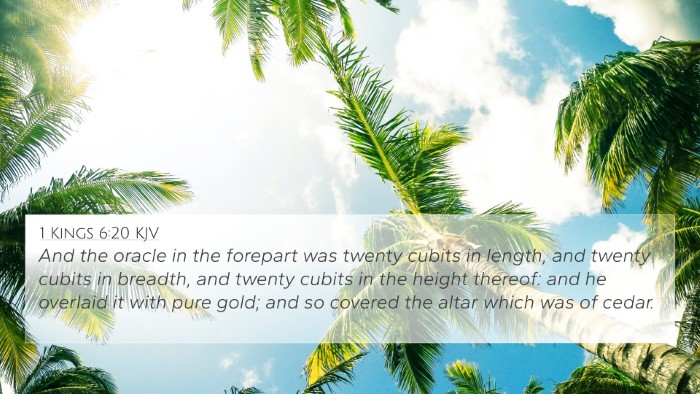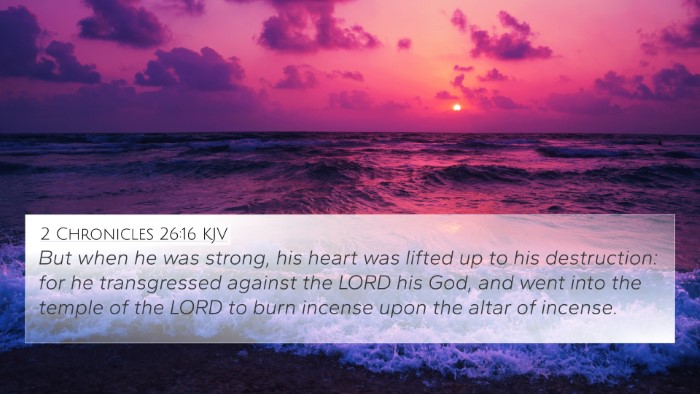Understanding Exodus 30:1
Bible Verse: Exodus 30:1 - "And thou shalt make an altar to burn incense upon: of shittim wood shalt thou make it."
Summary of Exodus 30:1
This verse is pivotal in illustrating the design and purpose of the altar of incense within the ancient Israelite worship. It establishes the significance of incense offerings and the type of materials used for its construction.
Connecting Commentary Insights
-
Matthew Henry:
Henry emphasizes the importance of the altar as a symbol of prayer and intercession. He highlights that the incense symbolizes the prayers of the saints that rise before God, similar to how the sweet aroma pleases the Lord.
-
Albert Barnes:
Barnes elaborates on the materials specified for the altar (shittim wood), indicating its strength, durability, and the symbolic nature of cleanliness and purity required in worship. He asserts that the altar represents the spiritual preparation needed to approach God.
-
Adam Clarke:
Clarke notes that the specific instructions underline God's desire for an orderly and reverent worship system. He also draws attention to the use of incense as a representation of divine favor and a means of communion with God.
Bible Verse Cross-References
Exodus 30:1 is interconnected with several other scripture passages that illustrate themes of worship, intercession, and divine communication. Below are some vital cross-references:
- Revelation 8:3-4 - Discusses the golden altar before God, where the prayers of saints and incense converge.
- Leviticus 16:12-13 - Details the role of burning incense in the Day of Atonement, connecting to the idea of atonement through prayer.
- Psalms 141:2 - "Let my prayer be set forth before thee as incense." This verse compares prayer directly to the burning of incense.
- Hebrews 9:4 - Mentions the golden altar of incense within the context of the Holy Place, linking the Old and New Testament worship practices.
- Luke 1:10 - Refers to the prayers of the people rising up during Zechariah's service at the altar of incense.
- Isaiah 66:3 - Addresses the nature of acceptable offerings to God, reflecting on the essence of spiritual worship rather than mere rituals.
- 1 Peter 2:5 - Talks about believers being a holy priesthood, offering spiritual sacrifices acceptable to God, related to worship at the altar.
- Exodus 30:34-38 - Provides further instructions on the creation of incense and highlights its holiness.
- Matthew 21:13 - Jesus asserts the purpose of the temple as a house of prayer, linking to themes of worship seen in the altar of incense.
- Philippians 4:18 - Emphasizes the concept of offerings and sacrifices to God in the New Covenant context.
Thematic Connections and Insights
This verse not only illustrates ancient Hebrew practices but also lays the groundwork for understanding intercessory prayer and the nature of worship in the New Testament. The altar serves as a vital point of connection between the believer and God. Below are notable themes derived from Exodus 30:1:
- Worship: The altar is a representative of worship, emphasizing the need for a sacred space where humanity meets divinity.
- Prayer: Incense represents the prayers of believers, merging symbolism with spiritual reality.
- Intercession: This highlights the role of mediation between God and humans, resembling Christ's advocacy.
- Purity and Holiness: The materials specified denote the importance of purity in approaching God.
- Divine Instruction: Emphasizes reliance on God's commandments for worship practices.
Comparative Bible Verse Analysis
By employing a cross-referencing Bible study approach, one can uncover deeper meanings within scripture. Exodus 30:1's references to prayer and worship parallel various New Testament teachings, demonstrating a continuous theme of reverence and approach to God.
Utilizing Cross-References: Tools for Bible cross-referencing such as concordances and reference guides are instrumental in studying these connections. For believers aiming to enhance their understanding of related themes, the following methods are beneficial:
- Document Meanings: Keep a journal of insights gained from comparative studies.
- Discussion Groups: Engage in discussions with fellow believers to uncover new interpretations.
- Scripture Mapping: Visual representations can assist in identifying thematic connections more effectively.
- Online Tools: Numerous digital resources can help facilitate cross-referencing methods.
Conclusion
In conclusion, Exodus 30:1 stands as a crucial verse within the biblical narrative, inviting readers to explore the rich themes of worship, prayer, and intercession. Its connections to various scriptures amplify the call for a deeper relationship with God, framed by the principles of holy worship. Engaging with cross-references not only enriches our understanding but also enhances our spiritual journey as we unravel the depths of Scripture.
Final Thoughts: Through the comprehensive study of Bible verse parallels, individuals can grasp the intricate web of divine communication within the Holy texts, leading to a more profound appreciation of their faith.
